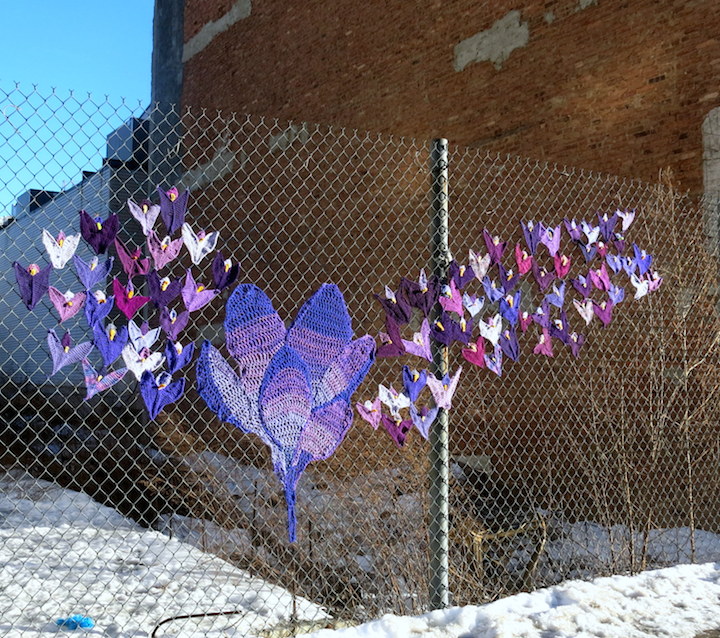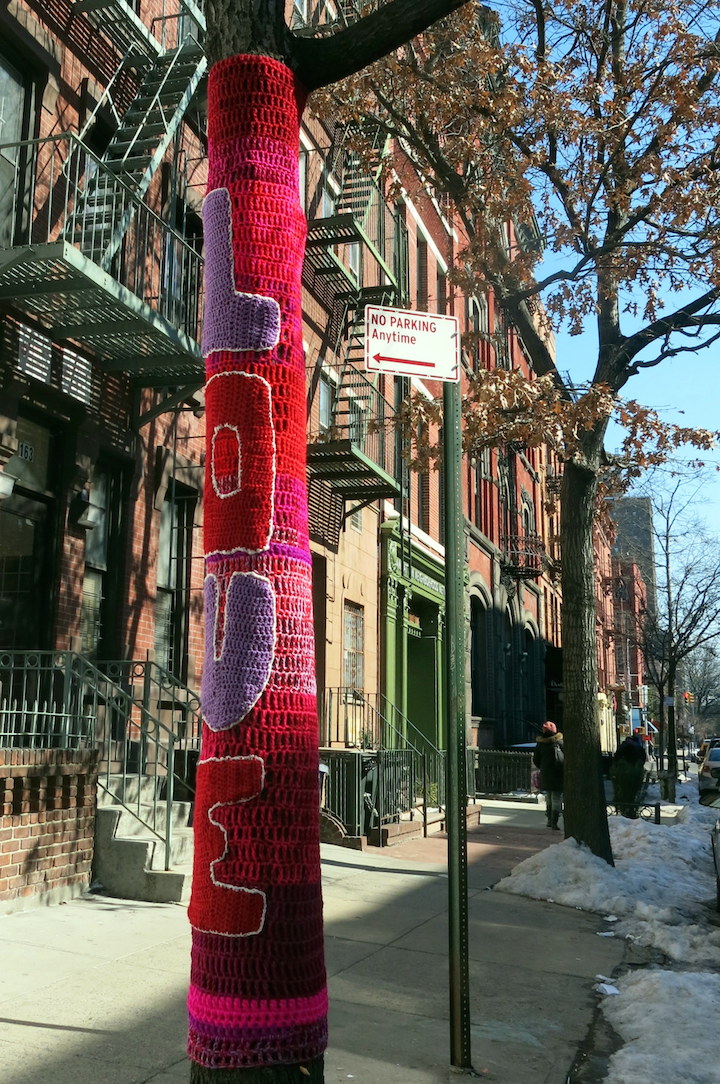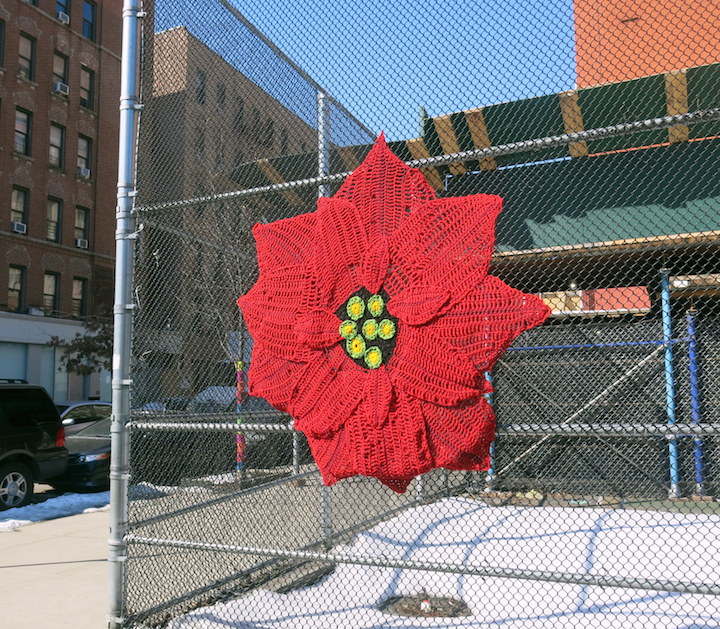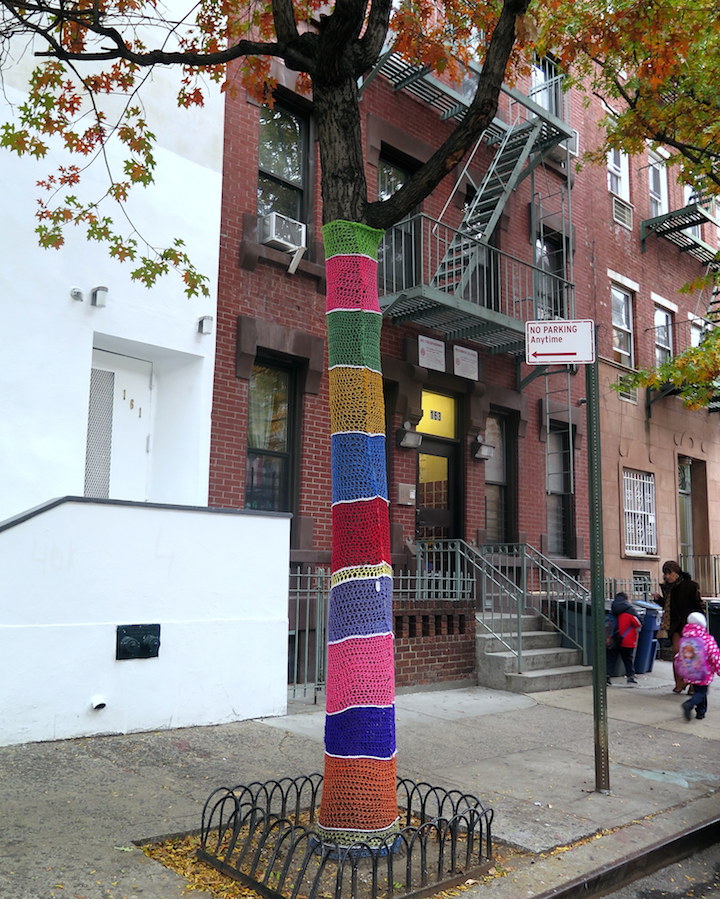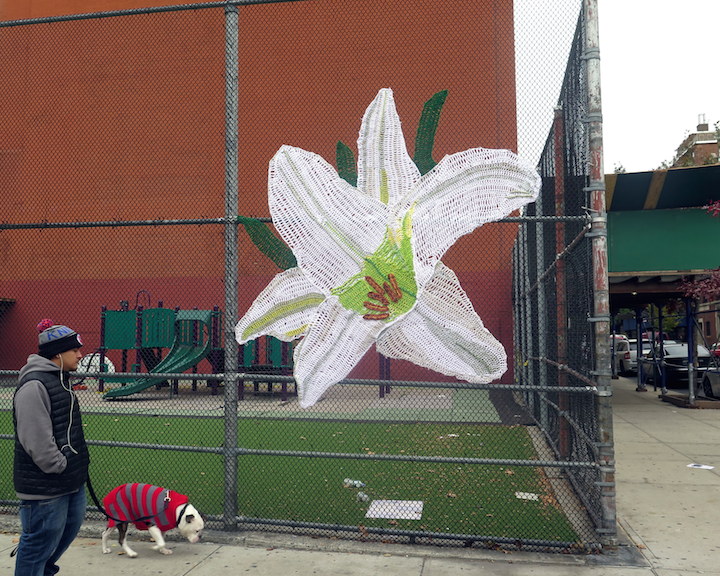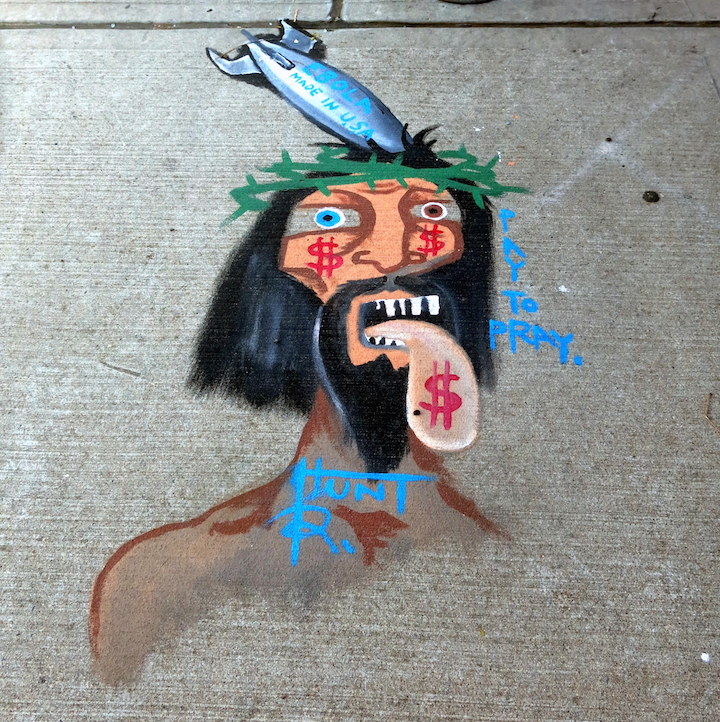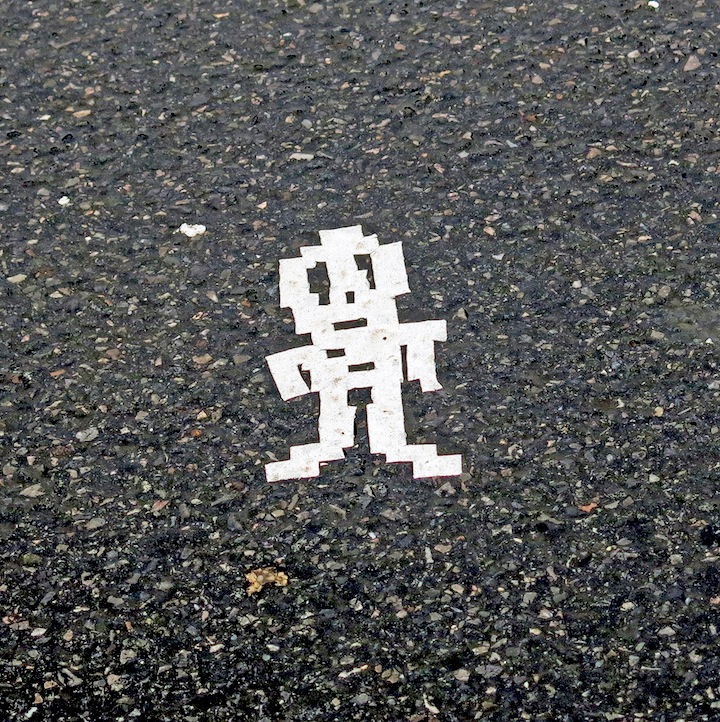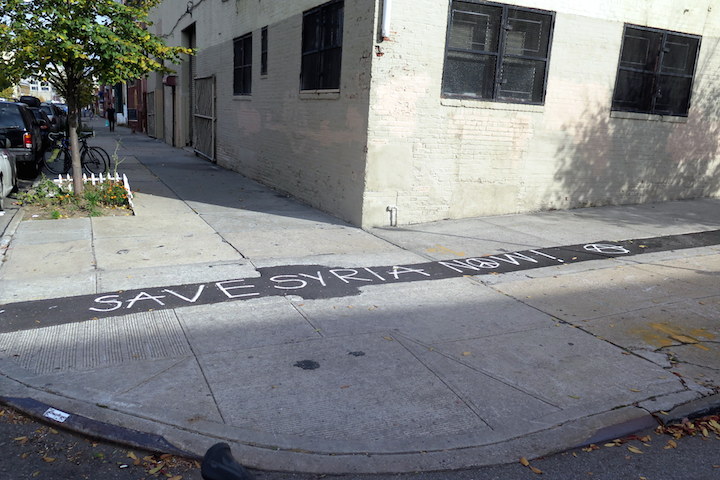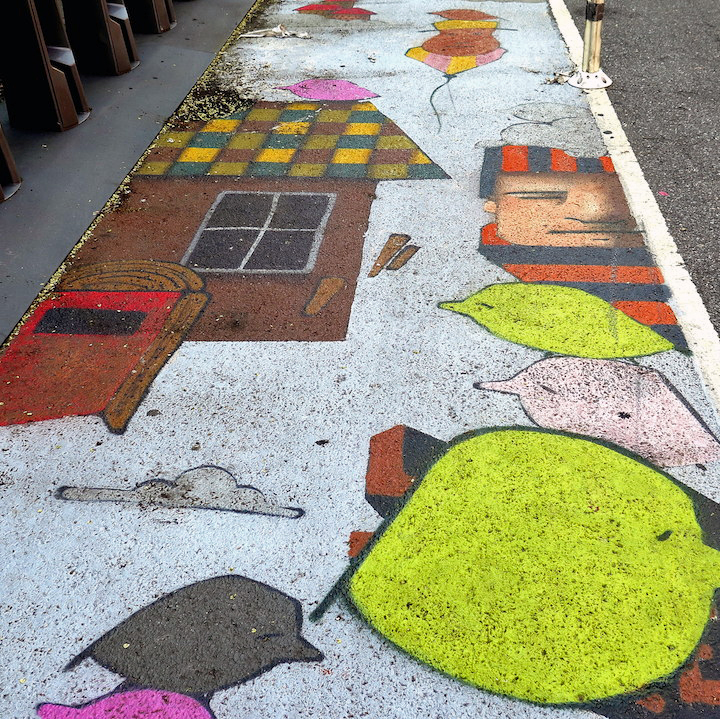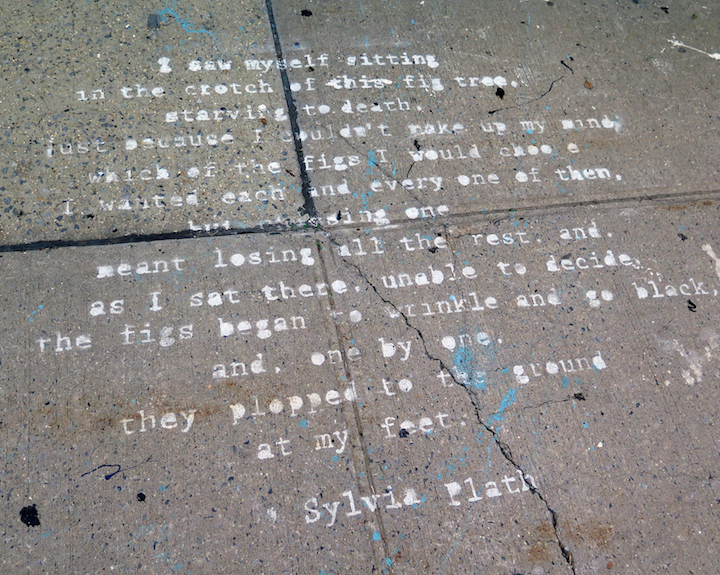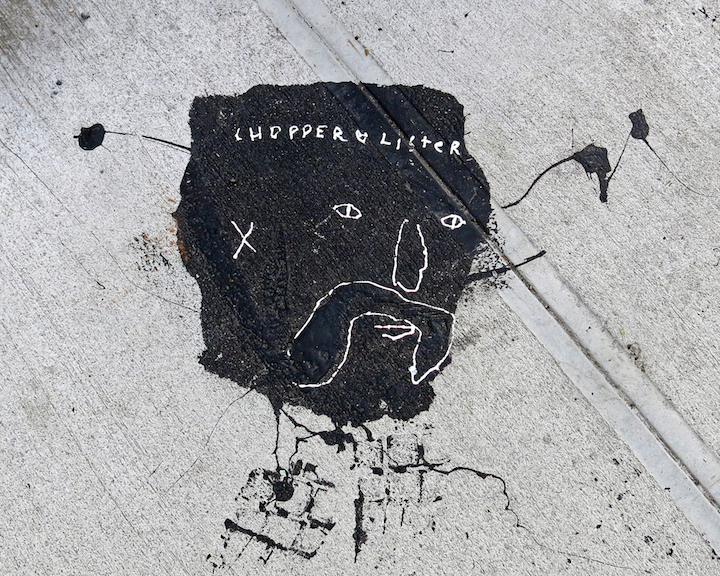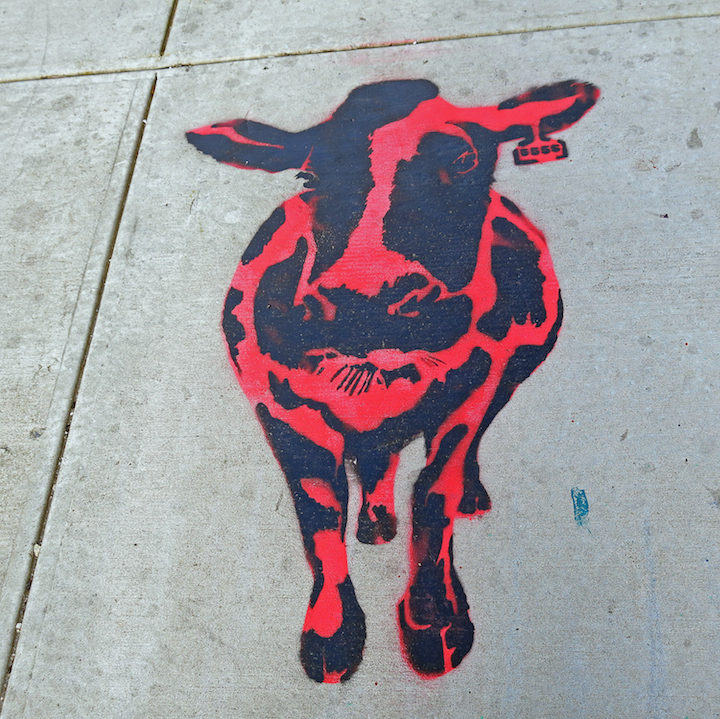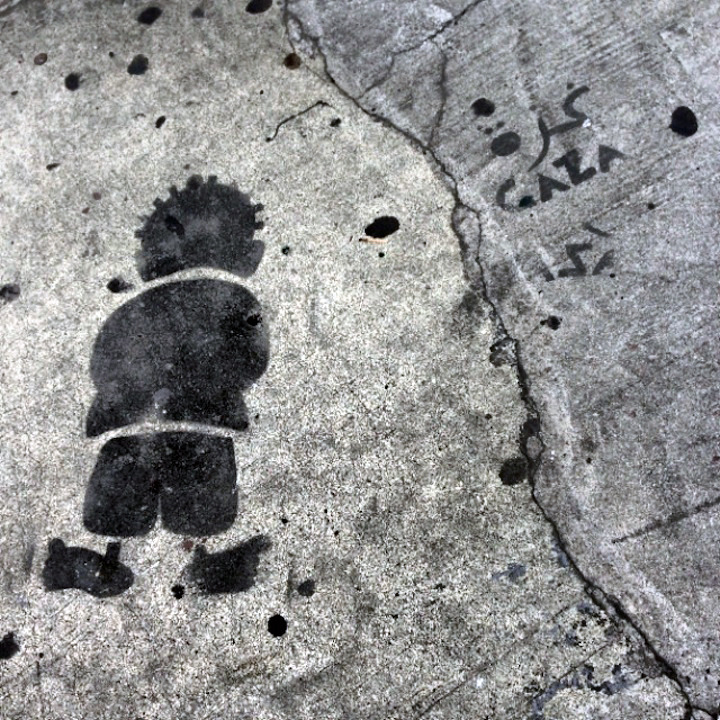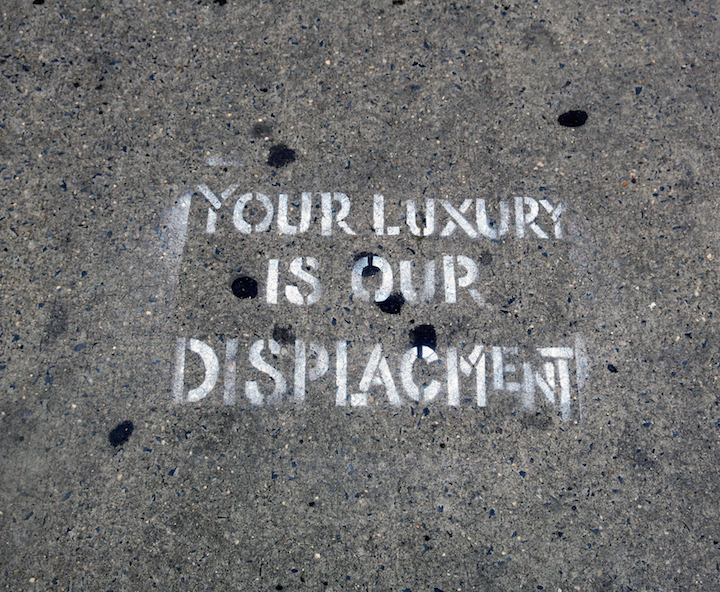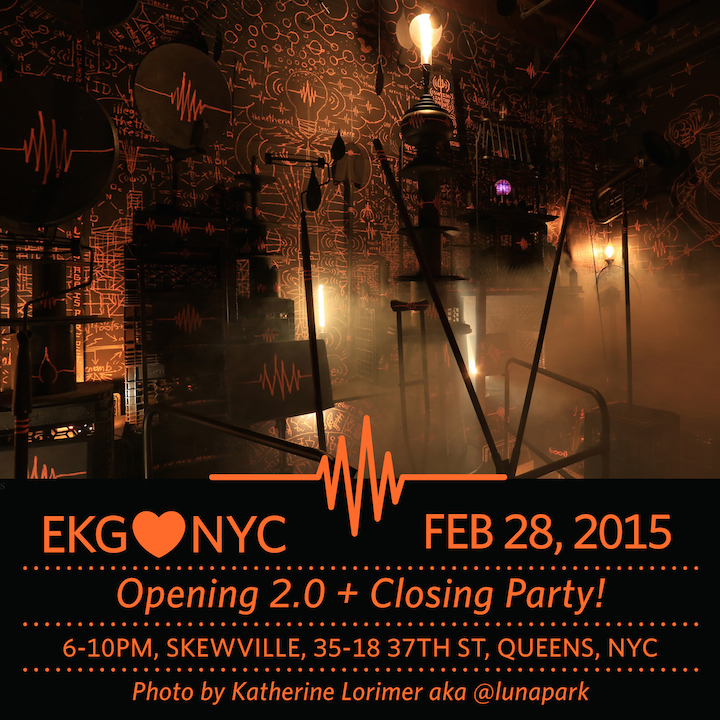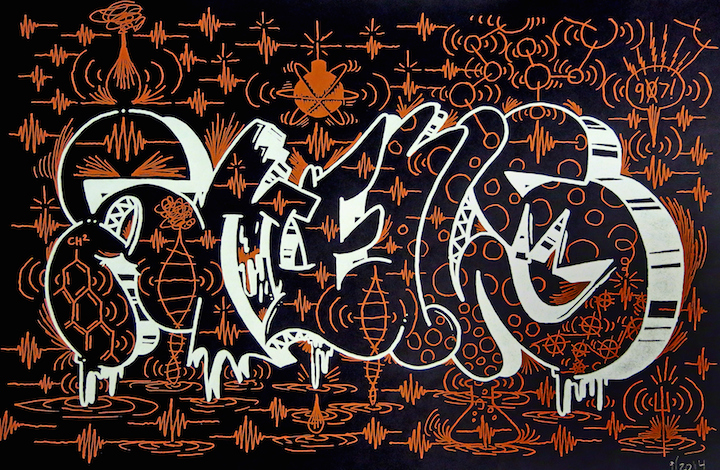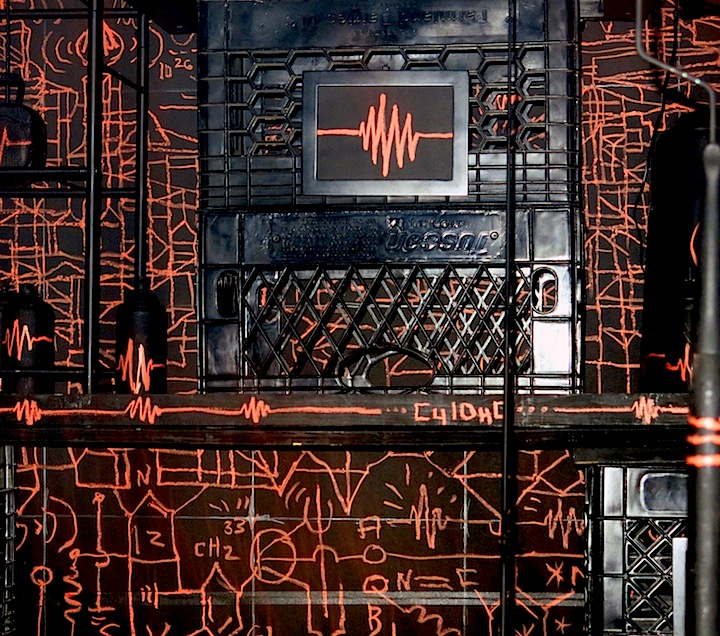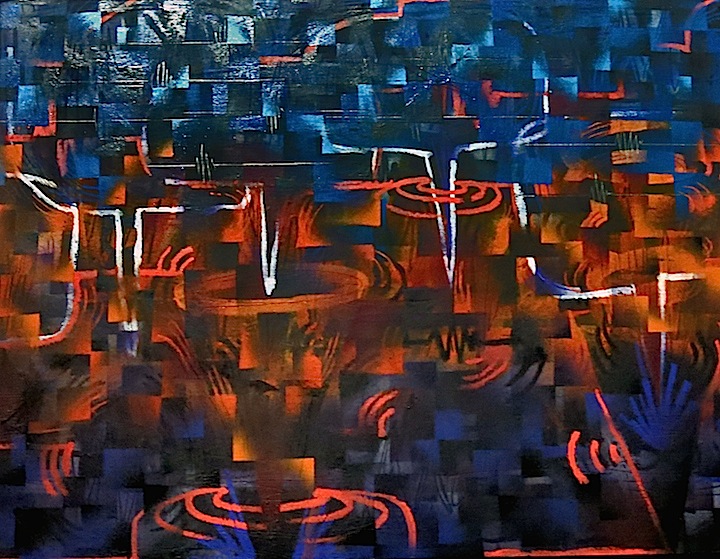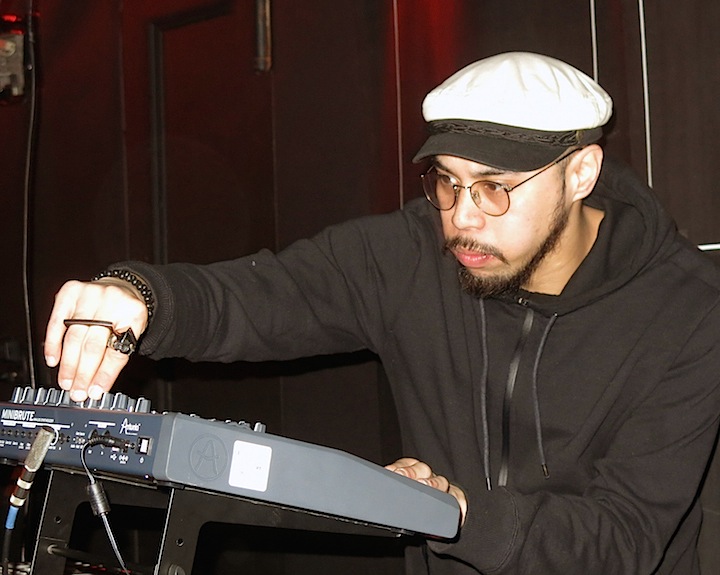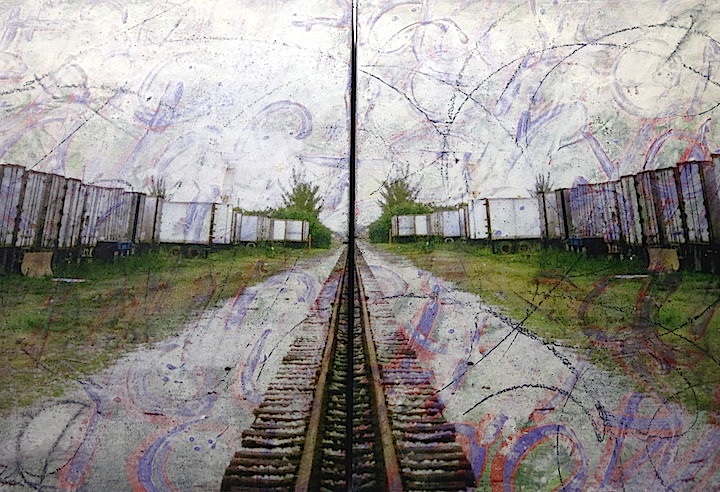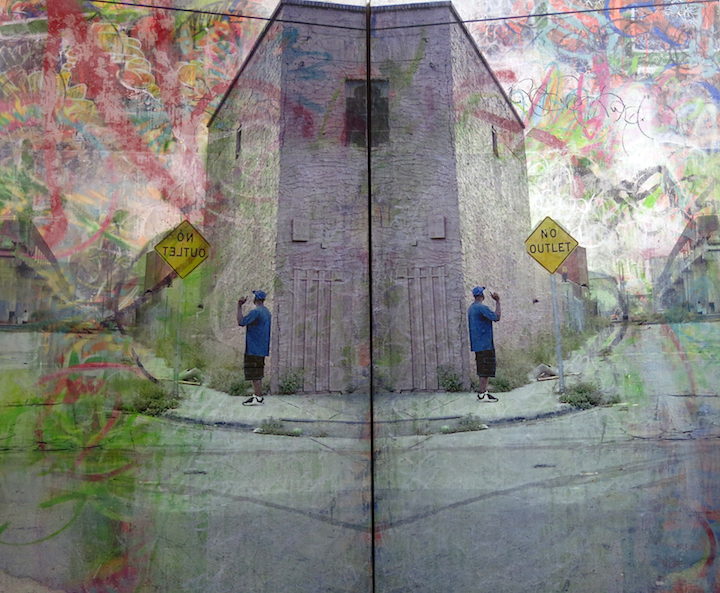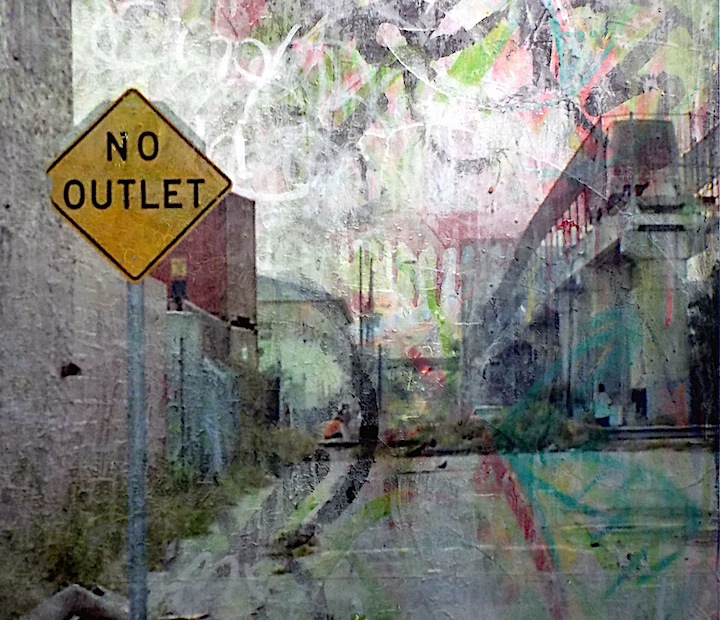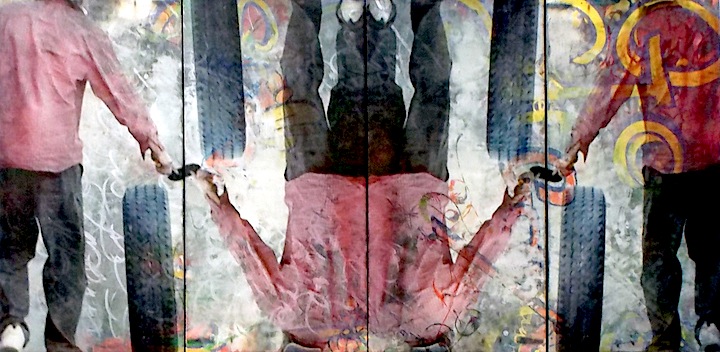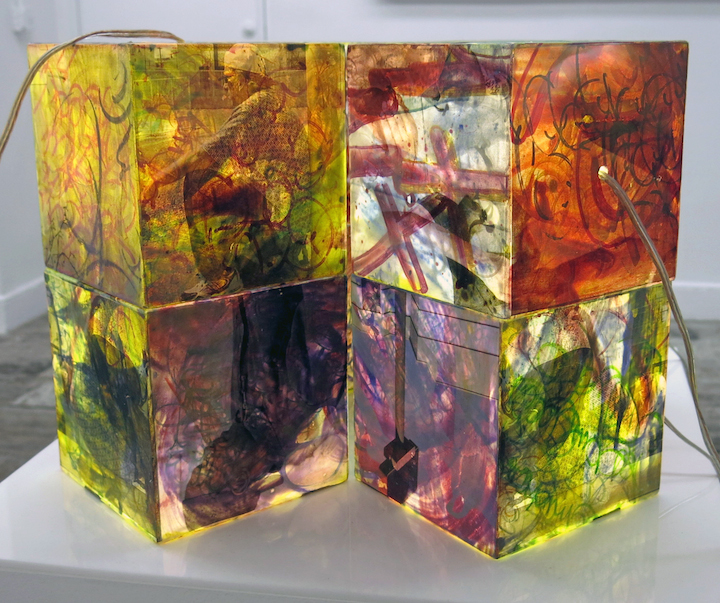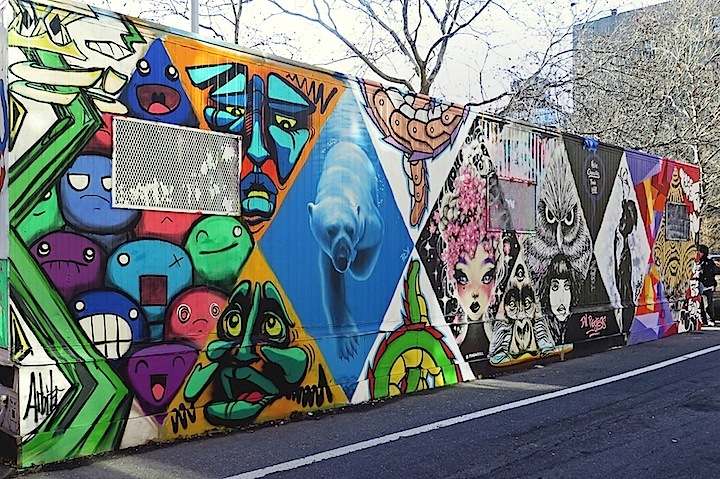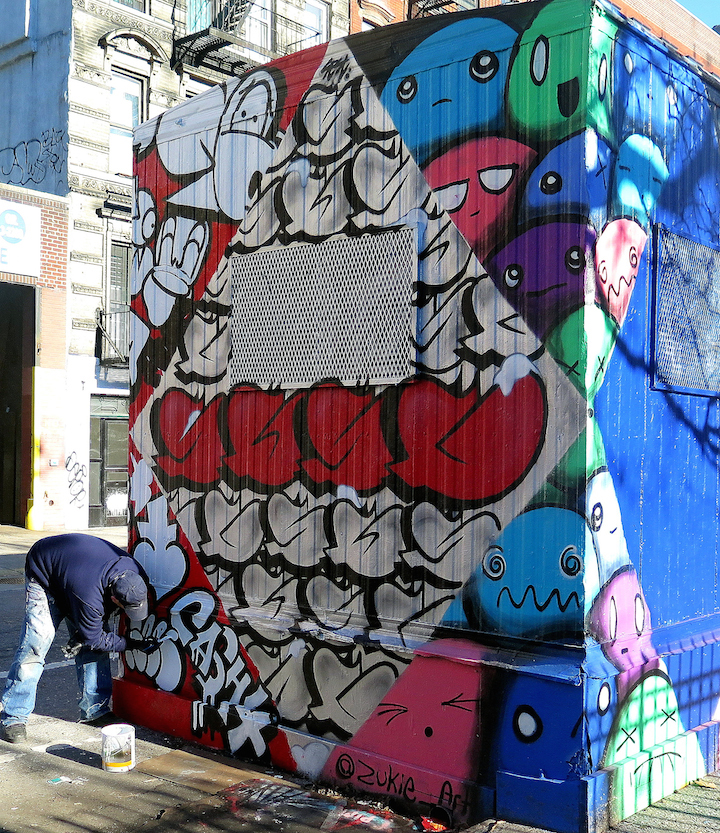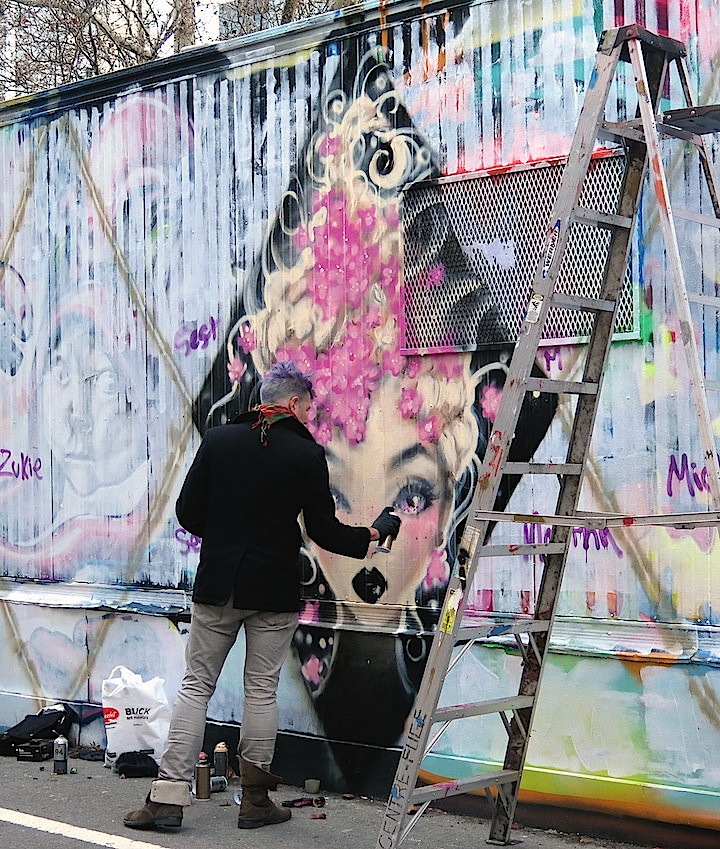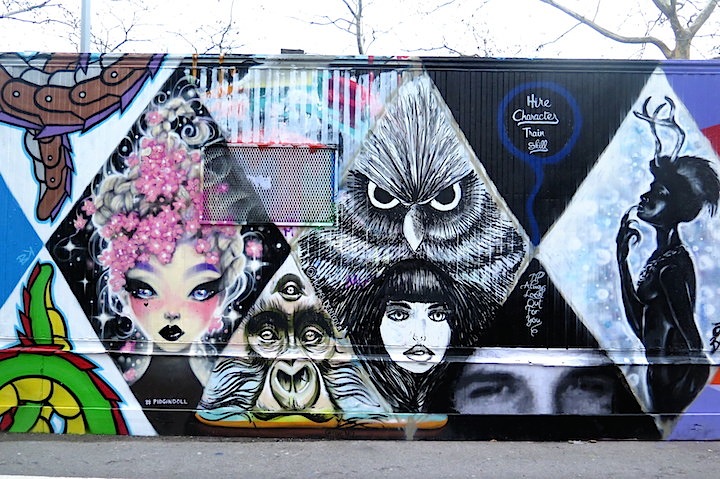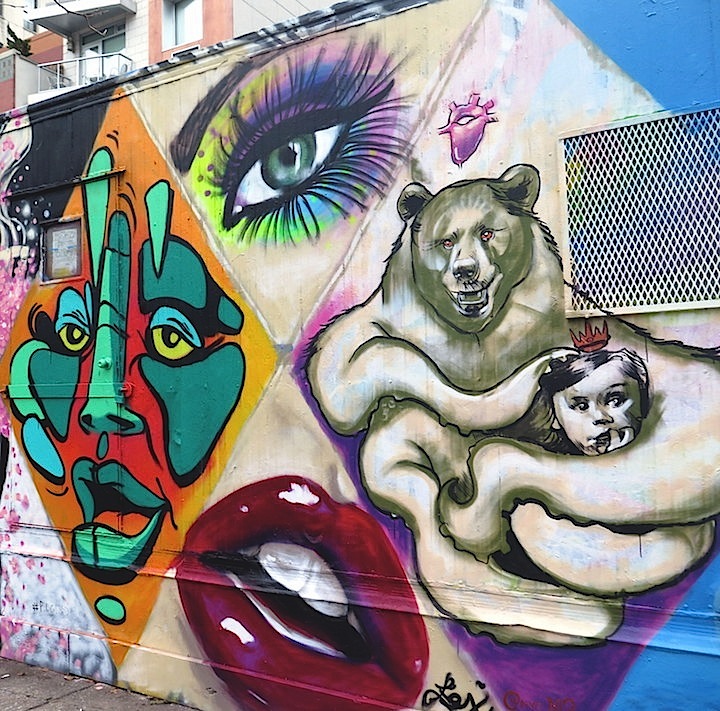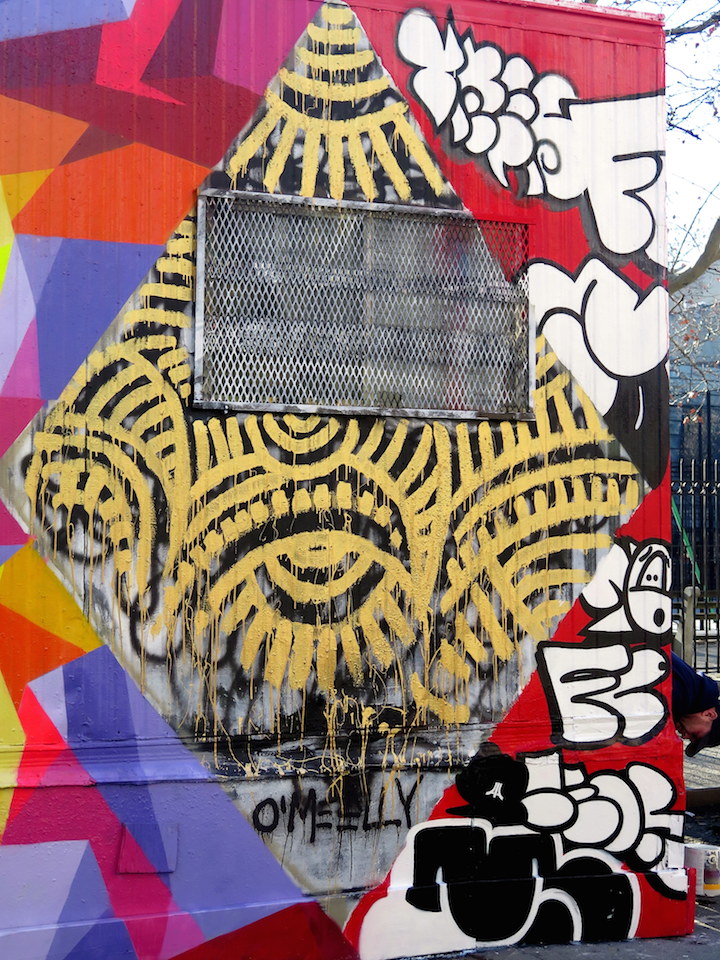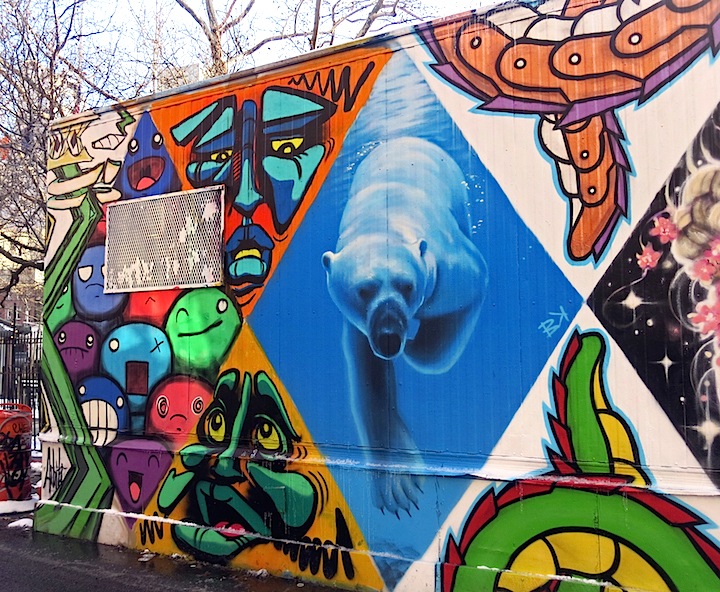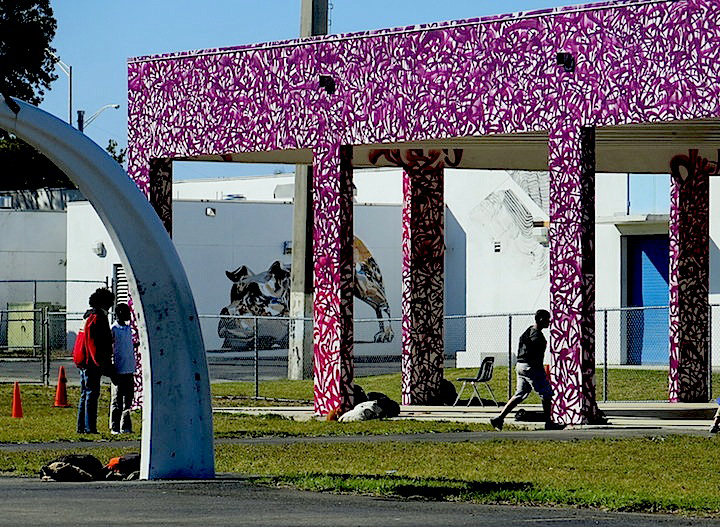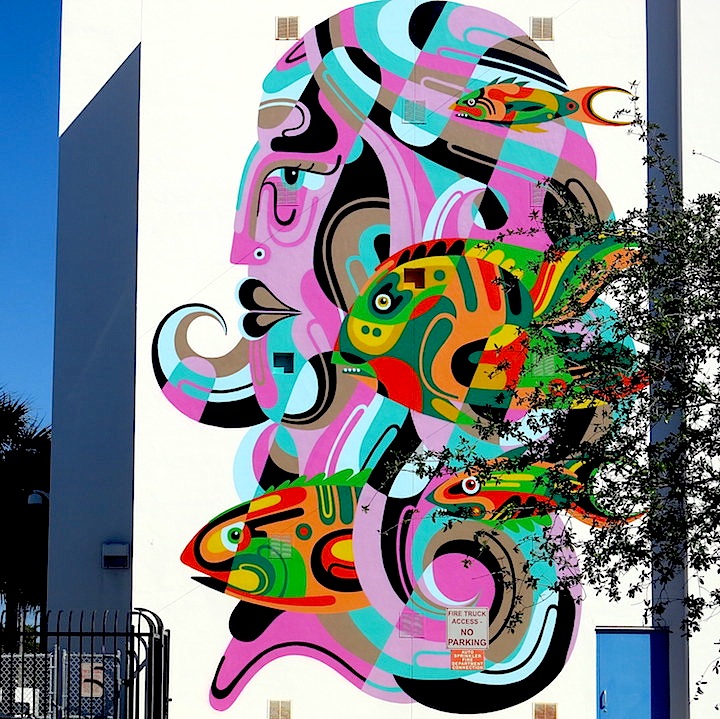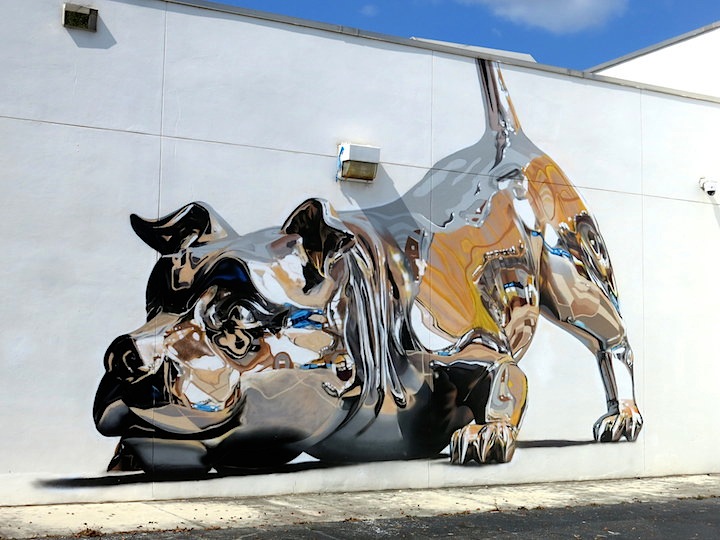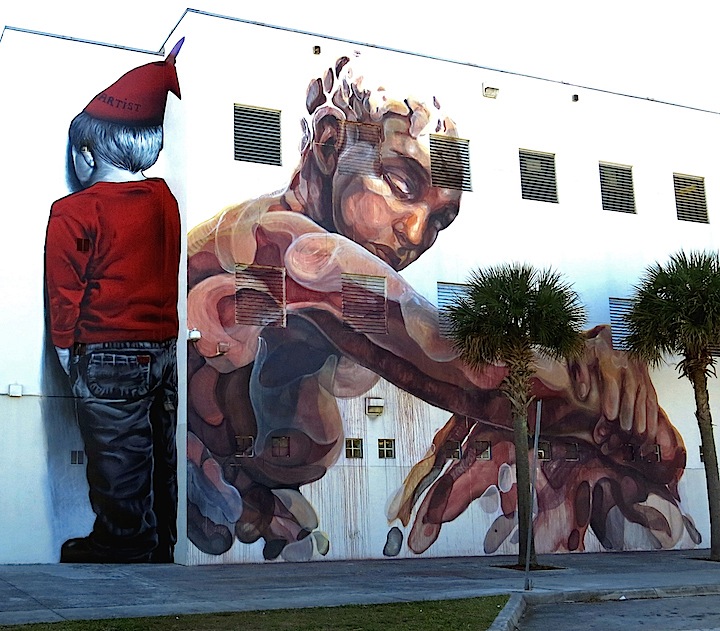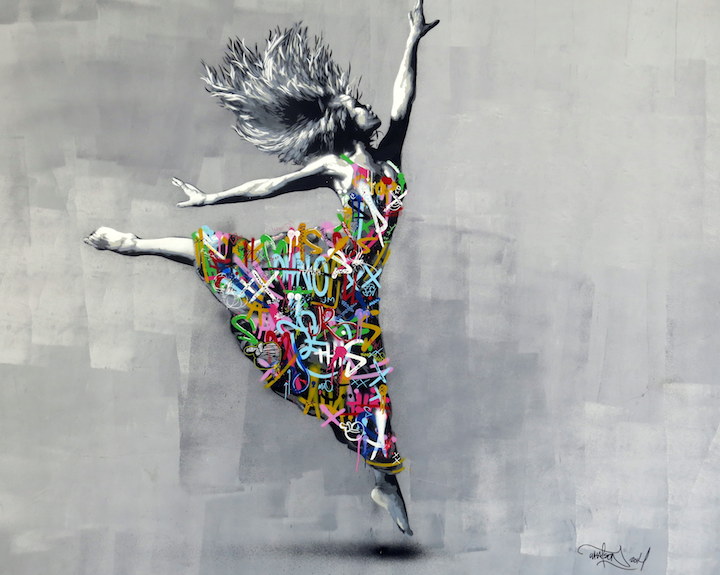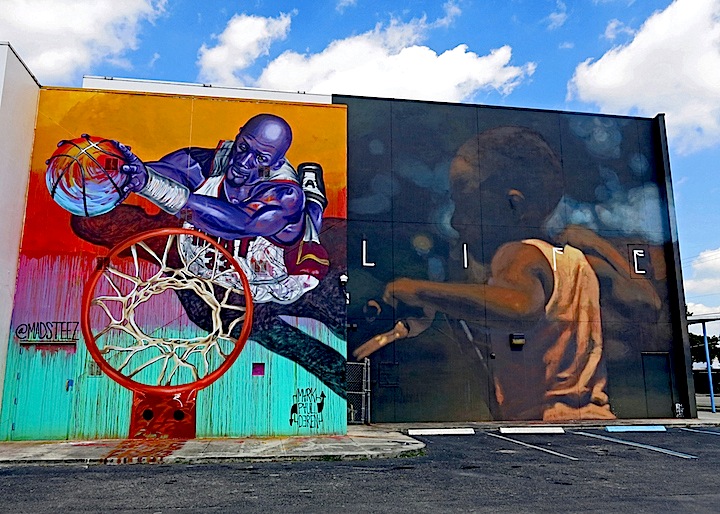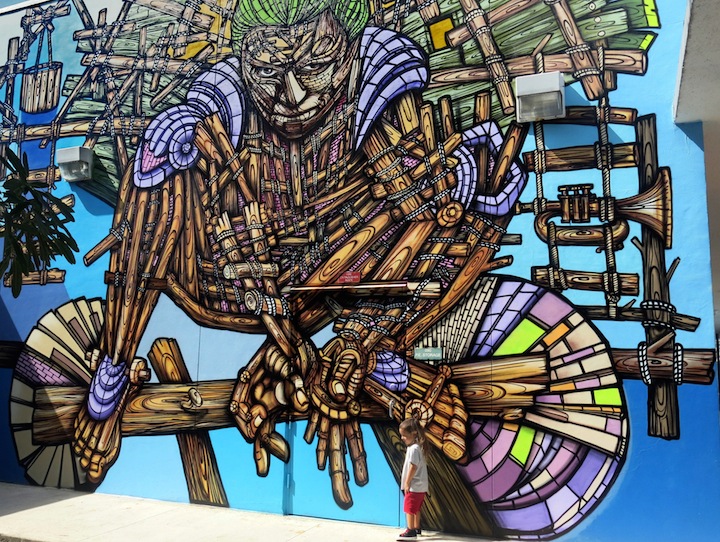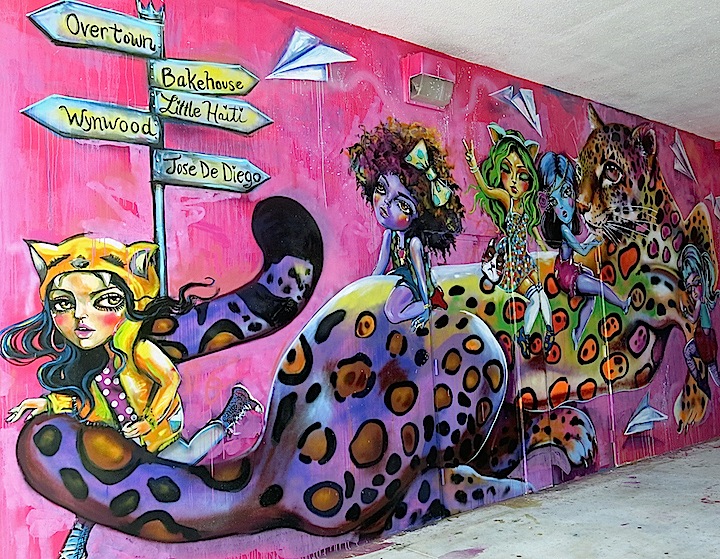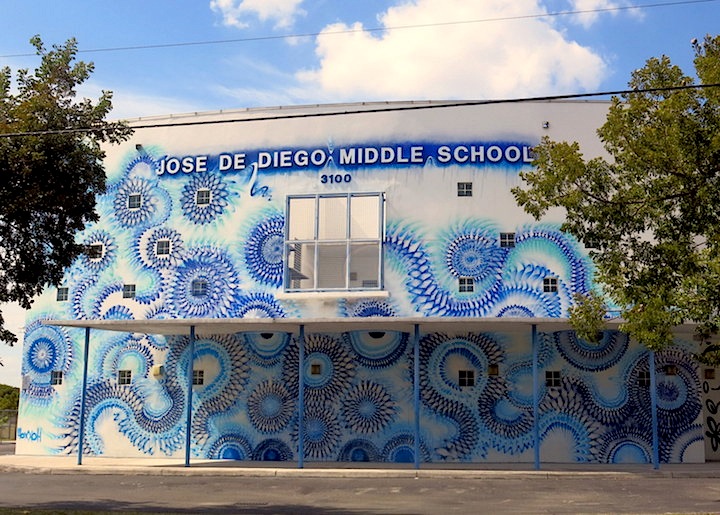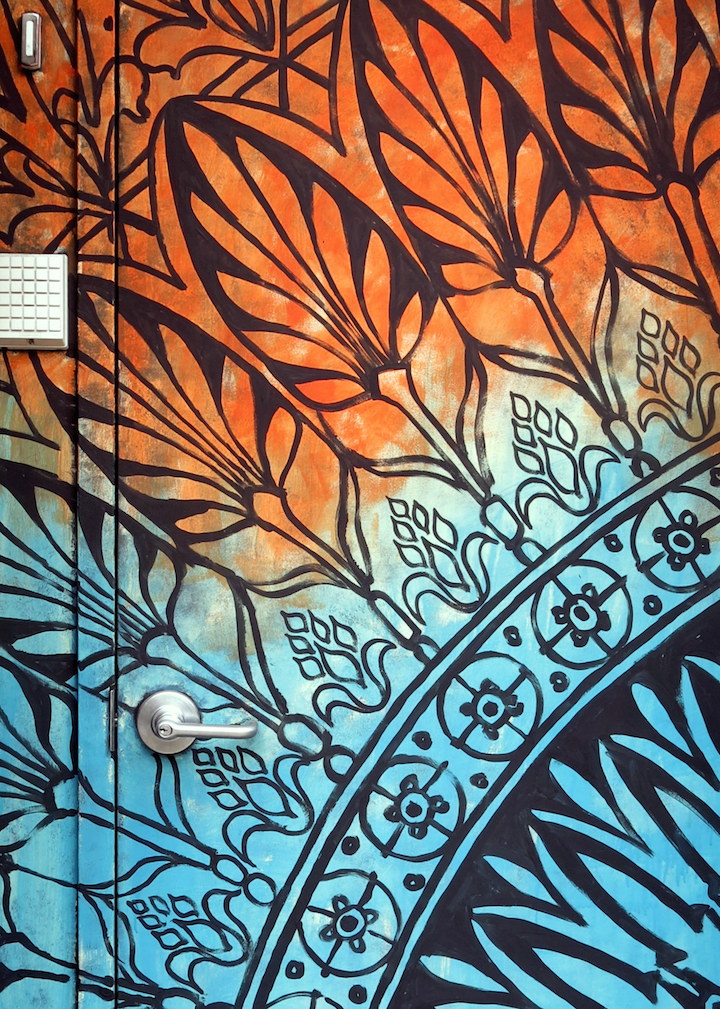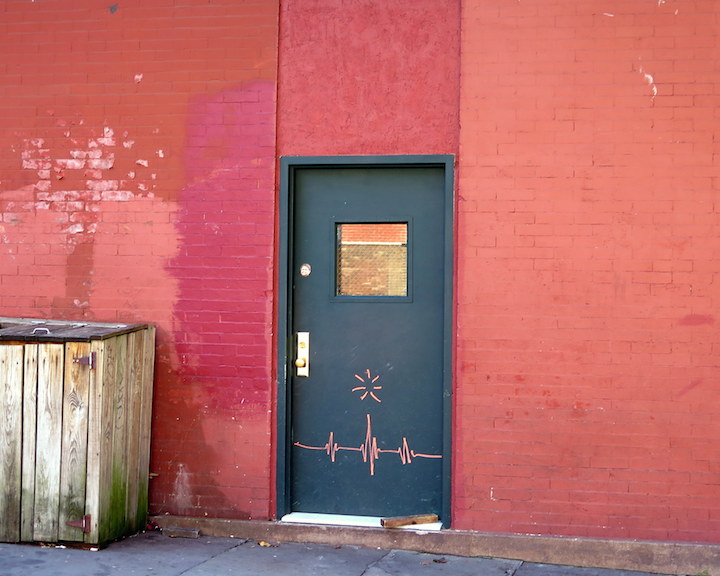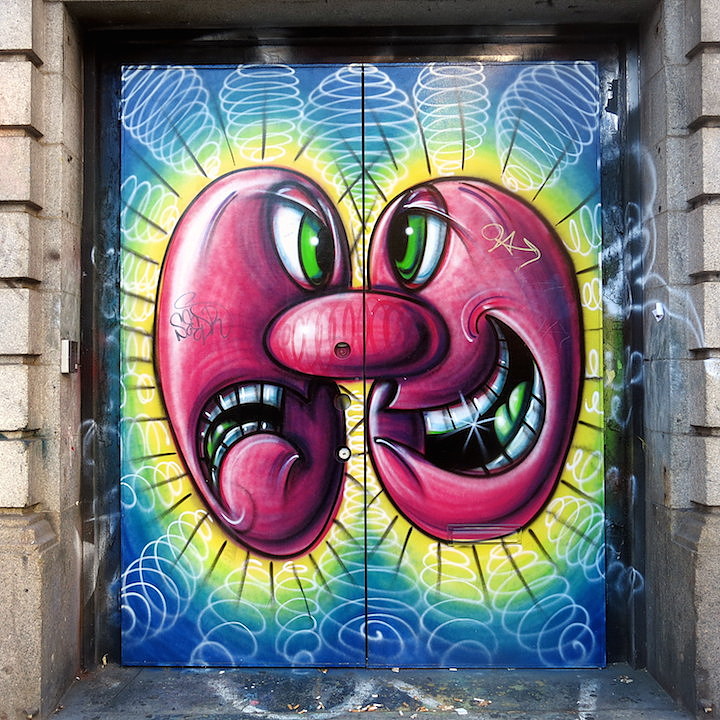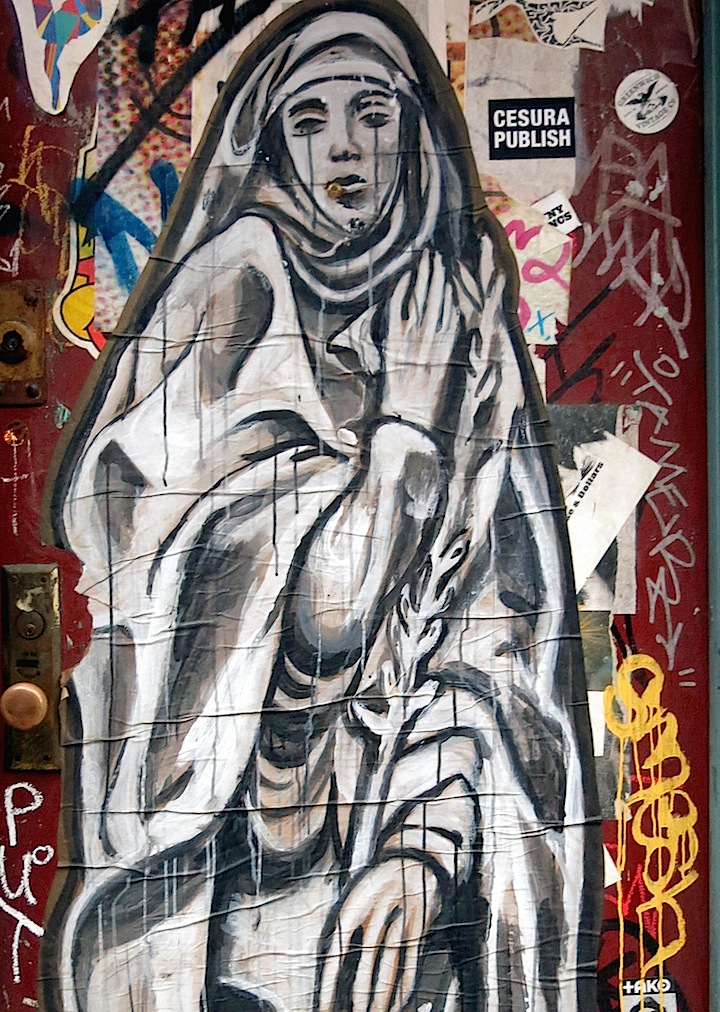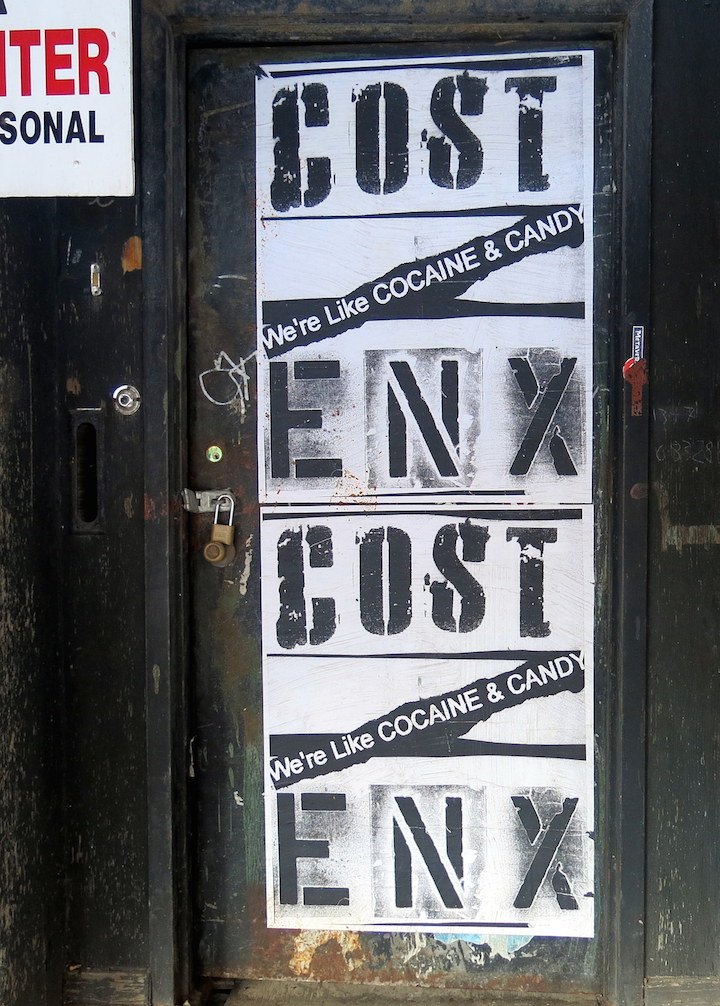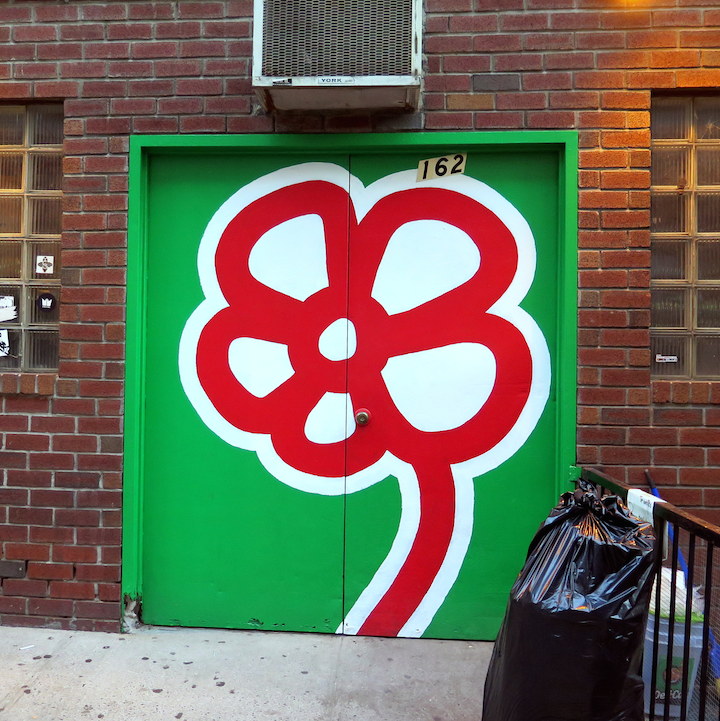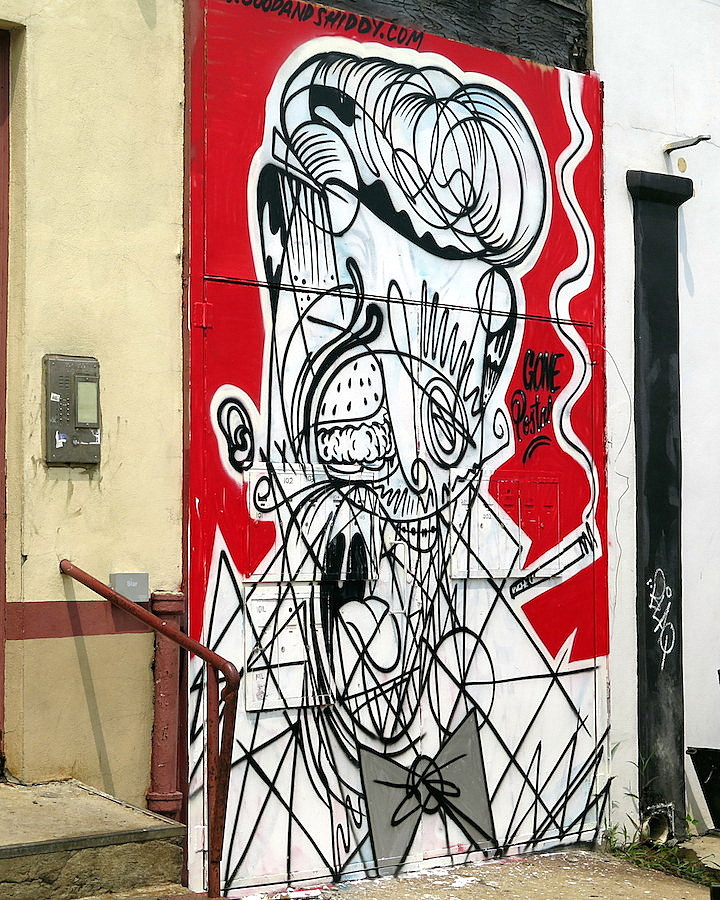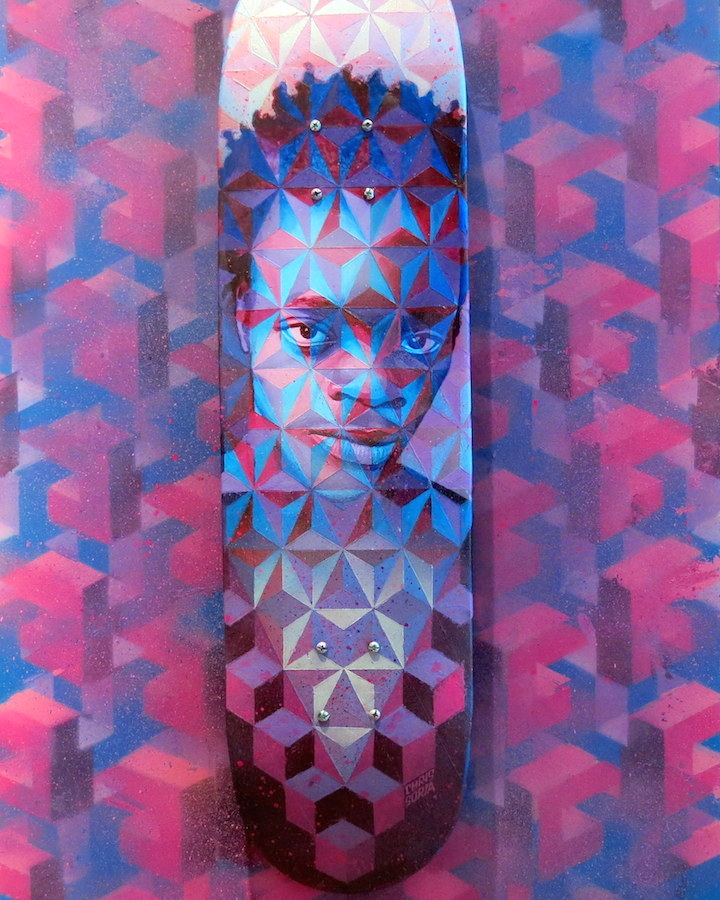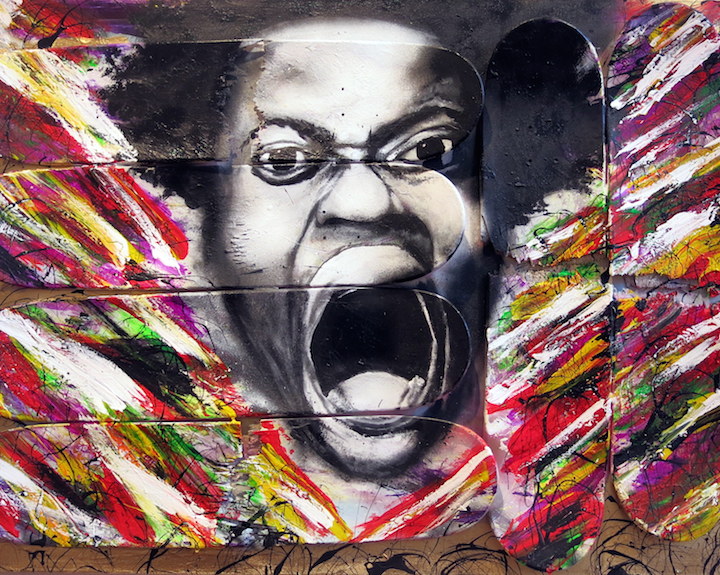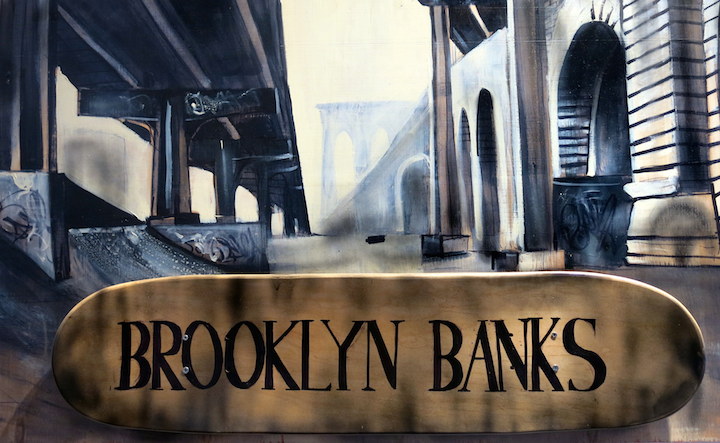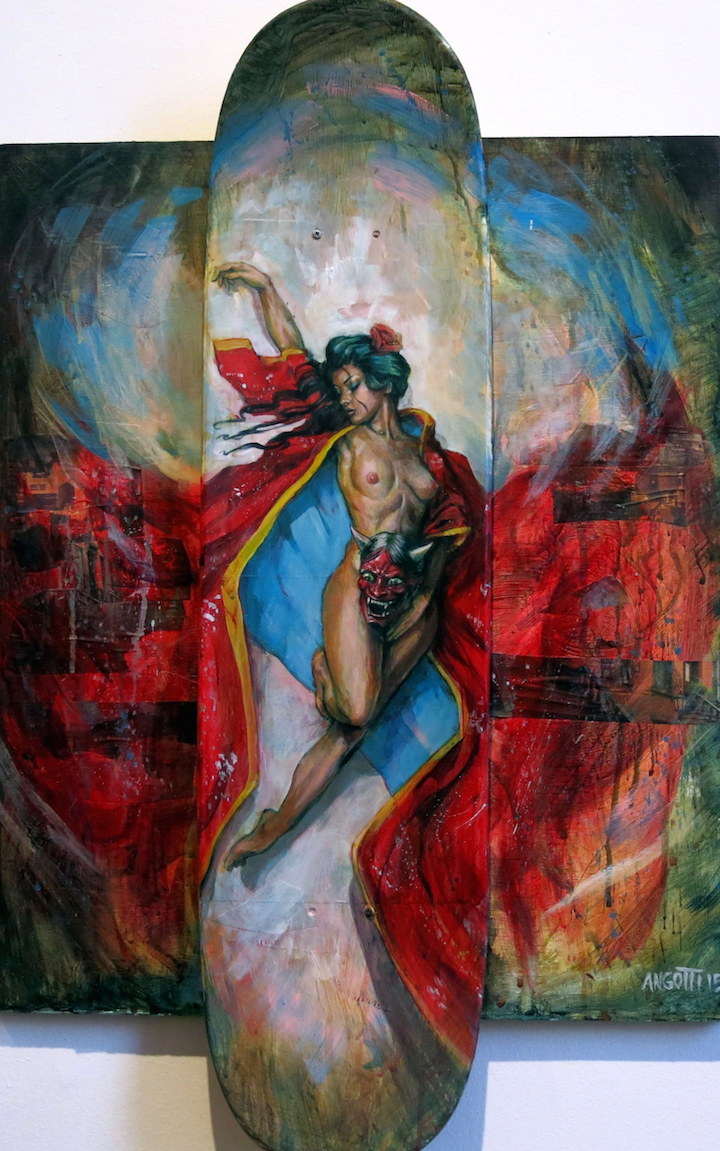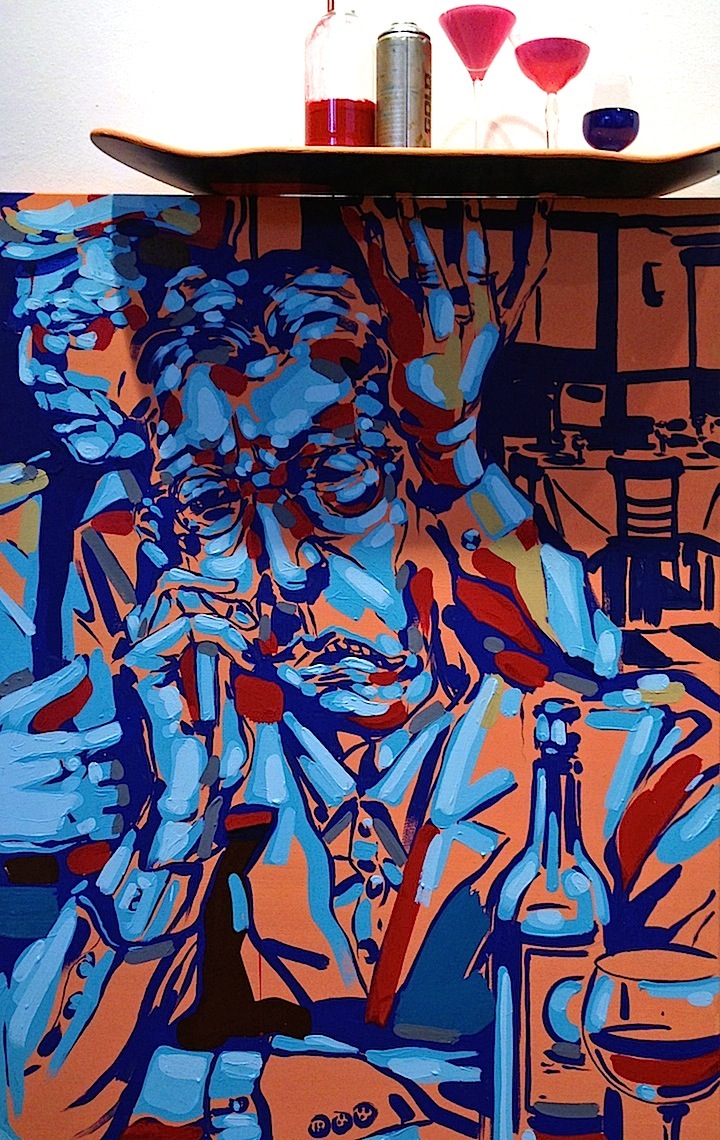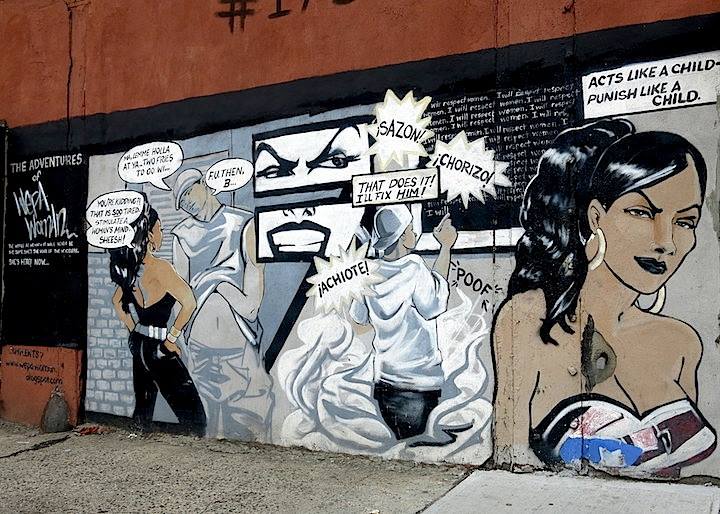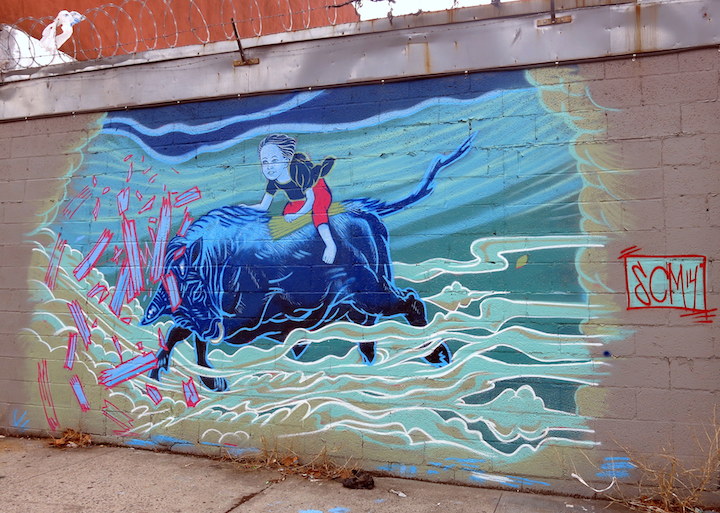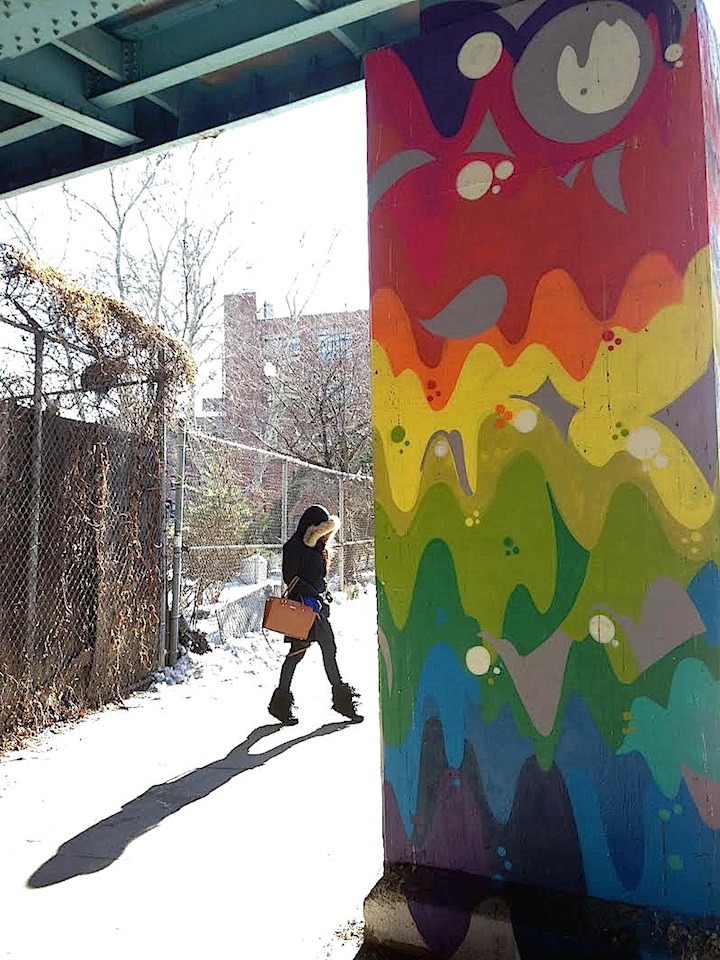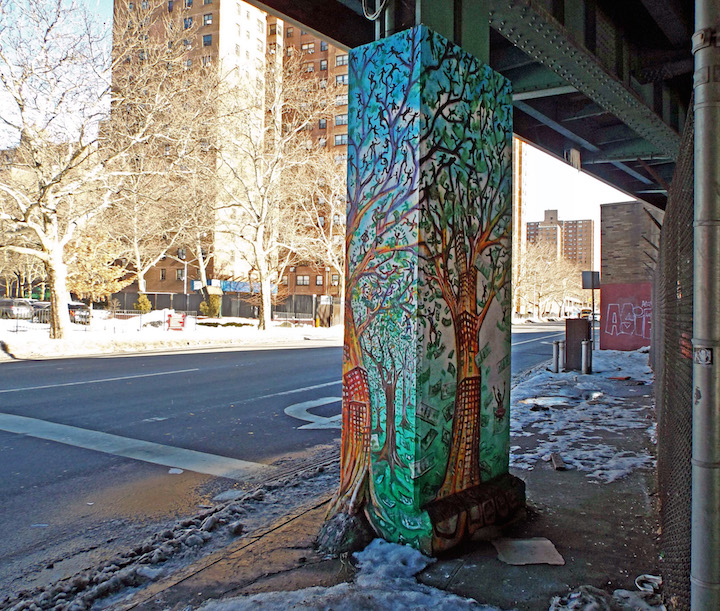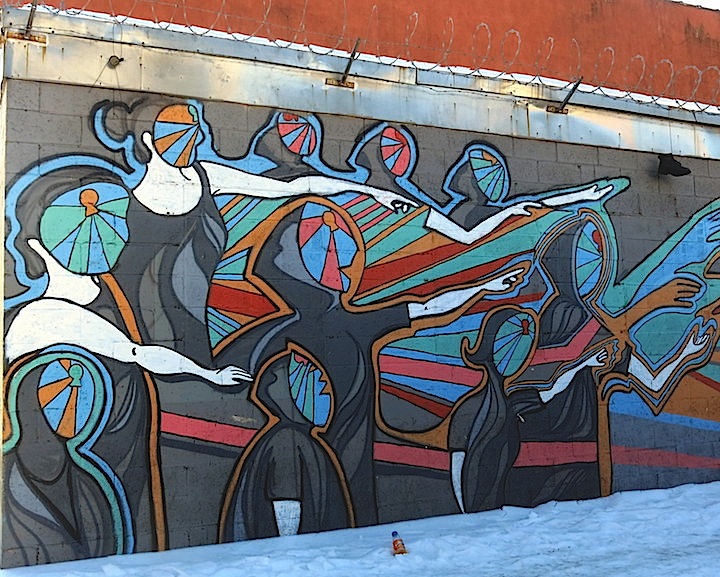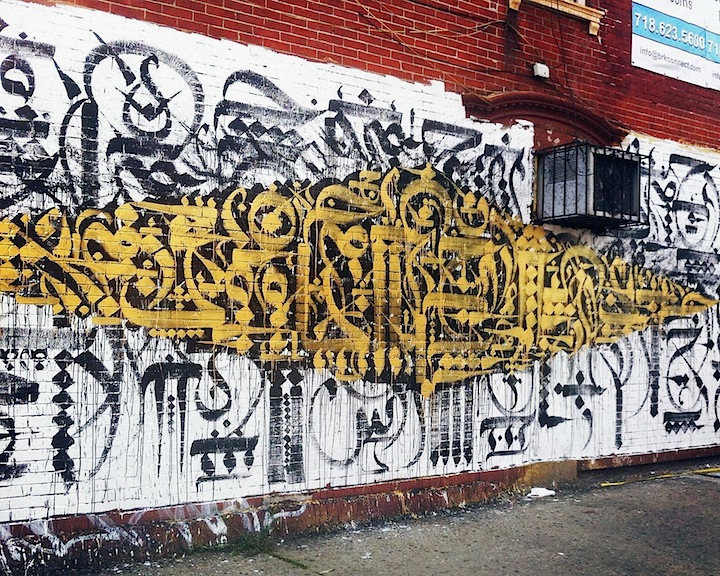
Fusing ancient Arabic scripts with modern Western strokes, Moroccan native Rocko has fashioned a distinct aesthetic that has been increasingly making its way onto NYC walls. We were delighted to have the chance to meet up with him this past weekend.
When did you first get up?
Back in Morocco in 1997. I was the first one to bomb in Meknès. It was something that I had always wanted to do. I was a b-boy, and graffiti was always an essential aspect of that culture. I’d also painted for the pioneering hip-hop crew, Dogs, known these days as H-Kayne.
What about here in NYC?
Here in NYC I only work on legal spaces. There’s too much at risk here!
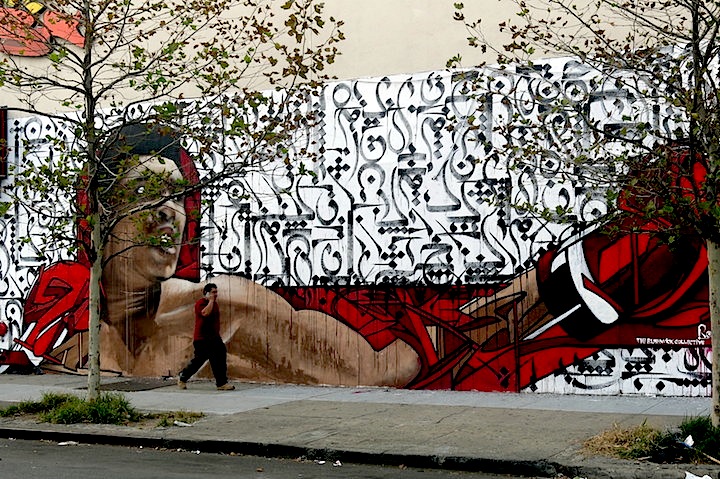
What was your first piece here?
Three years ago I did my first piece for the Pita Palace on Montrose and Bushwick.
What was the experience like?
I loved it. I particularly love the interaction with the passersby as I’m painting.
What kinds of surfaces do you prefer?
As I generally paint with brushes, I need smooth surfaces. I also look for spots with no trees of cars blocking the view.
How have folks responded to your particular aesthetic – a fusion of Arabic calligraphy and graffiti?
The response was been overwhelmingly enthusiastic. I am constantly asked to design tattoos featuring my particular calligraffiti.
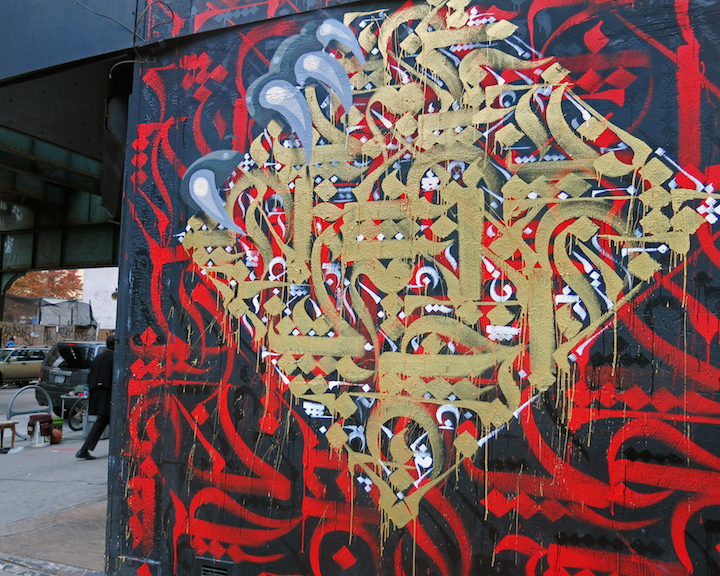
How does your family feel about what you are doing?
They love it. Everyone is supportive.
What percentage of your day is devoted to your art?
About 40%.
What is your main source of income?
I work as a director of a senior center in Bushwick.
What are some of your other interests?
Cycling. I race for the Brooklyn Arches.
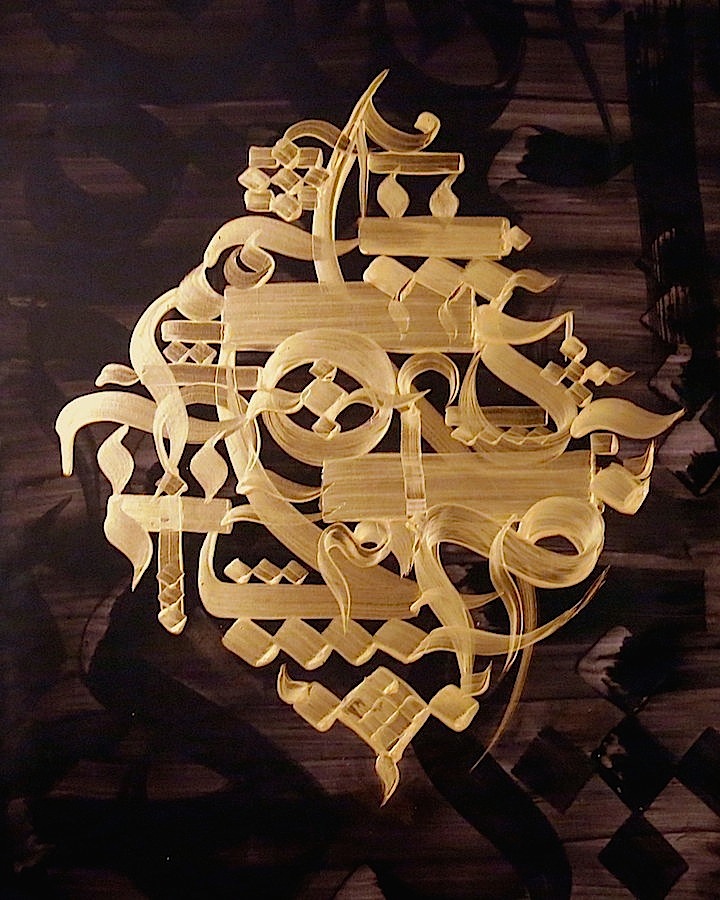
Any thoughts on the graffiti/ street art divide?
I feel that it’s reached a turning point in recent weeks. I expect there will be less of a division from now on.
How do you feel about the movement of graffiti and street art into galleries? Have you shown your work in galleries?
I’m fine with it. It’s just a different context. Yes, I’ve shown my work in a number of spaces in Brooklyn.
What about the corporate world? Any thoughts about that?
I don’t mess with it!
Do you prefer working alone or collaborating with others?
I often work alone, but I’ve collaborated with a number of artists including Zimer, Eelco and N Carlos J.
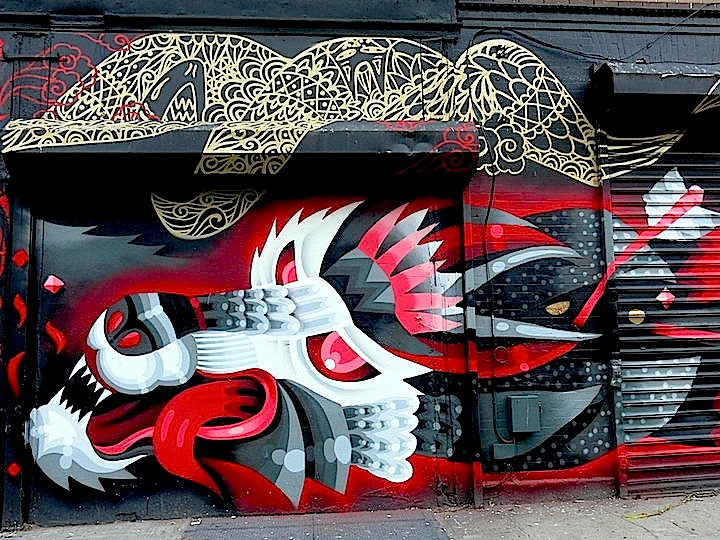
Is there anyone in particular you would like to collaborate with?
I love what Sek3 is doing. I would like to collaborate with him.
When I first saw your work, I confused you with Retna. Does that happen often?
Yes! But I’ve been doing it for 34 years. It’s my culture!
How do you feel about the role of the Internet in this scene?
I think it’s very important. It introduces us to so much.
Do you have a formal arts education?
No, I never went to art school. I’m self-taught. I began doing Arabic calligraphy when I was four years old with a wooden pencil!
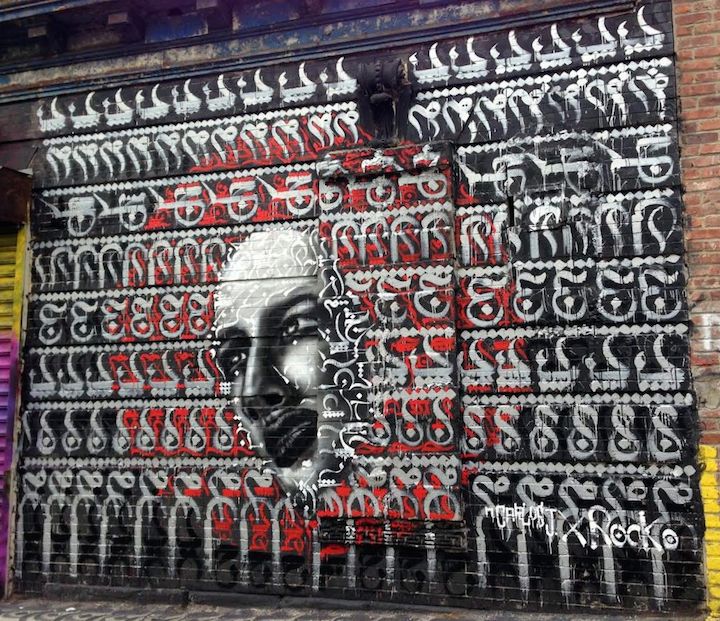
How would you describe your ideal working environment?
Just me in my studio. But working on public walls is more fun!
What inspires you these days?
Everything I see around me!
Are there any particular cultures you feel influenced your aesthetic?
Arabic.
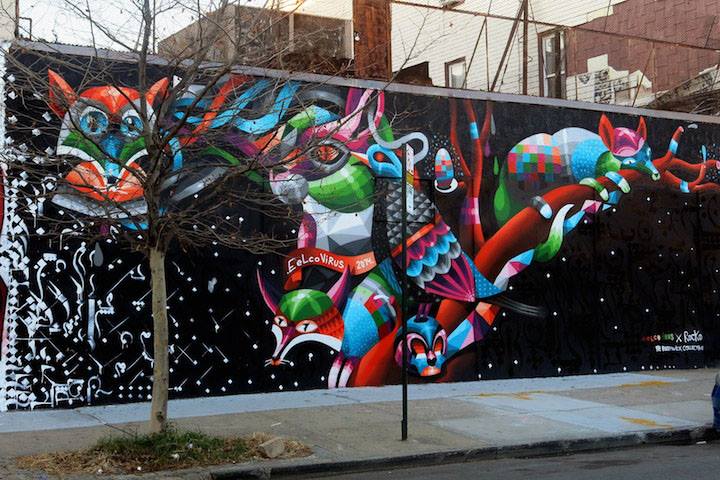
Do you work with a sketch in your hand or do you let it flow?
Never! I freestyle.
How has your work evolved in the past few years?
It’s gotten better. Sharing my work in public spaces pushes me to work harder at my craft.
What do you see as the role of the artist in society?
The artist has a huge responsibility to his or her community – to enhance it in a respectful manner.
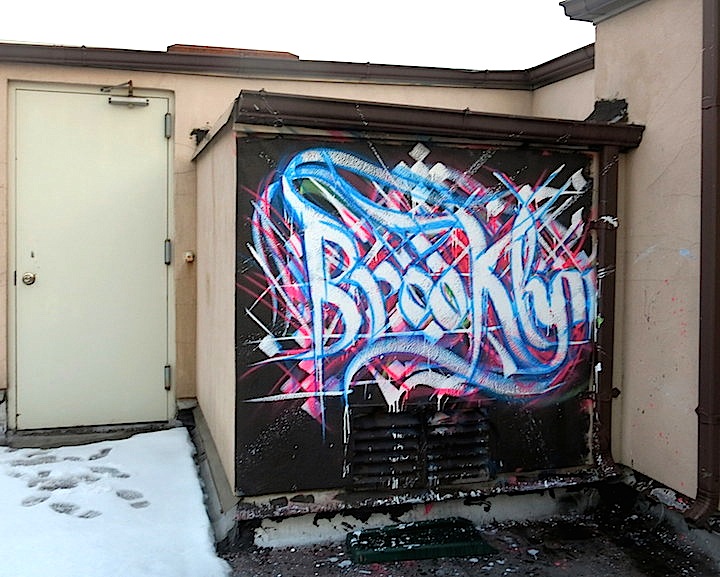
How do you feel about the photographers and bloggers in this scene?
They are very important!
What do you see as the future of street art?
It will just keep on growing and evolving.
And what about you? What’s ahead?
More walls, more collabs and more exhibits. I will also continue to curate the Dodworth Mural Project that I launched last year.
That sounds wonderful! We are looking forward!
Interview by Lois Stavsky with Houda Lazrak; first photo courtesy of the artist; all others by Lois Stavsky; photo 2 is a collaborative with Zimer; 5 with Eelco and Vera Times; 6 with N Carlos J and 7 with Eelco
